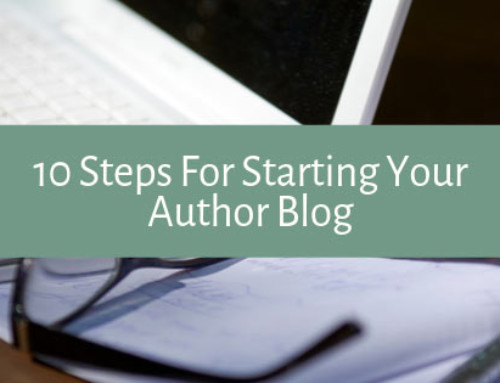The truth for nearly all authors is that it takes more than just publishing a book to get readers to notice you. With thousands of books published each year, both traditionally and self-published, authors need to have a plan to spread the word about their book. Marketing your book is vital if you want people to find and read it. We’ve put together some useful tips to get you thinking about how best to market and sell your book.
Tip #1: Identify Your Target Market
Before you even begin, identify your target market. Your target market is your audience, or the people you’re writing your book for. When determining your niche, think about demogrpahics such as gender, age, geography, and life experiences. If you have a focused, defined audience, you can better focus your marketing efforts, saving time and frustration!
We’ll use a fiction book as an example. Let’s say you’ve written a novel that follows a group of teenagers in high school. Would your target audience be readers over the age of 40? Probably not. Most likely you’ll target readers in their pre-teens and teens, possibly even in their 20s. At this age point, your readers are more likely to relate to the characters in your book, and therefore enjoy their reading experience more. Also remember that just as the language of your book should be easily relatable to this target audience, so should the language on your website, social media pages, and marketing materials.
On the nonfiction side of things, consider the topic and purpose of your book. If your book is about raising children, first-time parents will likely be your target audience. The more defined you can get, the easier it’ll be to market your book to the correct audience.
Also consider the design elements of your book and marketing materials, and what will attract your target audience. When you design your book cover, website, and social media pages, you want to make sure the design caters to these individuals. Why do many romance novels have seductive men and women on the covers? Because that’s what time and research has shown readers like! It’s no different than how children like books with illustrations—every market has its preferences.
Tip #2: Generate Local Attention
In the early stages of marketing your book, tell your family and friends about your new endeavor, and consider moving on to coworkers and other professional friends. When approaching family and friends, be tactful when you discuss your book. If your family or friends ask to hear more about it, then by all means tell them, but be mindful of how much time you dedicate to the topic. These individuals are the most likely to spread the word about your book to their friends and acquaintances, so you don’t want to overwhelm them. If you tell your family and friends about your book marketing efforts, you may find they even offer to help you!
When approaching local bookstores, come prepared or reach out and ask which materials the bookstore will need to consider carrying your book. They may just ask for a copy to review, or they may ask for a sell sheet with more details about the title. Just like with friends and family, be mindful of these organizations’ time. If you constantly bombard them with emails, calls, or appearances asking to carry your book, they may become dissuaded from doing so. A short follow up is just fine, and if they decline to carry it, accept it and move on. If you have a boost in sales over time, you can consider approaching them again with your new sales data.
Tip #3: Become Active on Social Media
You’ll find that marketing your book on social media can be one of the least expensive yet easiest ways to spread the word about your book. Most social media platforms, such as Facebook and Twitter, are free to sign up for. As an author, the sooner you can become active on social media, the better! Many people don’t think about marketing their book until after it’s published, but if you can get the word out and gain a following prior to publication, the better your chances will be of people being excited for your book’s release.
One thing to remember when posting on social media sites is to maintain a balance of self-promotion and useful information for other users. For example, if you wrote a book on how to train dogs, you can provide your followers with daily tips. If you’re publishing fiction, consider offering writing tips to other authors. To learn more about the benefits of social media, visit our blog post about The Power of Social Media.
Tip #4: Create a Media List and Pitch Your Book
Crafting a media list and pitching a book to media outlets is a traditional form of book marketing. Ideally, your media list will be a mix of local, regional, and national outlets to pitch to in hopes of getting coverage or a review. Your media list will be targeted to a specific audience, just like you target your readership. Here are a few examples of outlets you may want to consider on your media list:
Local Outlets: Many local newspapers, radio shows, and news stations like featuring local residents who’ve done something unique like write a book. If you’re able to obtain local coverage, this might also be good leverage to get local bookstores to carry your title.
National Outlets: Generally speaking, these are the most difficult types of outlets to receive coverage for. If you have a strong author platform, it can help increase your chances, but remember that national outlets like The New York Times or Publishers Weekly receive hundreds of pitches each day for new books. While this isn’t meant to discourage you from pitching these outlets, it’s important to know the facts when you decide where to spend your money on sending out books.
Blogs: There are abundance of blogs on the internet today and many have a strong following. For fiction authors, you can either find blogs that review any type of books, or find blogs that review specific genres (e.g., mystery, romance, or historical fiction). For nonfiction, you can expand your search and find blogs that review a specific topic that relates to your book (e.g., finance, relationships, cooking).
When you pitch your book, include a cover photo, sample chapter, press release, and other promotional materials in your email pitch. When you promote your book to media outlets, whether local, regional, or national, promote your idea, not your book. Give them a benefit to promoting your book. How would the ideas you present in your book relate to and interest the outlets’ audience?
There will be outlets that decline coverage or that you simply don’t hear back from. Realize this ahead of time, and prepare yourself. That being said, don’t automatically accept no response as a negative response: If you don’t get a response after one pitch, it’s acceptable to send a follow up email or two. Stop after three contact attempts, though—any more is considered spamming.
Final Thoughts
Marketing your book is a long-term process, not a one-time thing. Before you even begin your efforts, sit down and writing out a marketing plan. If you add your budget, proposed activities, and a timeline of your book marketing efforts, you’ll be on the right track. Start early and keep promoting after your book is published.
If you find yourself in need of assistance with marketing your book, Mill City Press offers a wide range of book marketing services that cover social media marketing and online campaigns. By mixing and matching our different options, you can come up with a plan that best fits your needs. Regardless if you choose to go at it on your own or enlist the help of experts, remember to make marketing your book a part of your publishing plan!
“]
Discover more from Mill City Press
Subscribe to get the latest posts sent to your email.














Leave A Comment